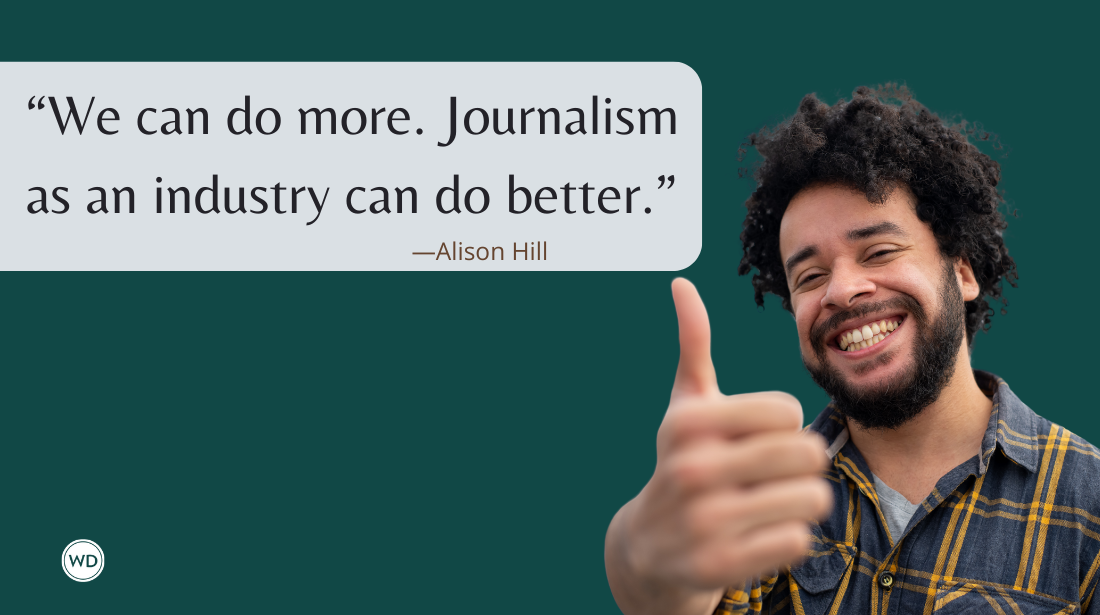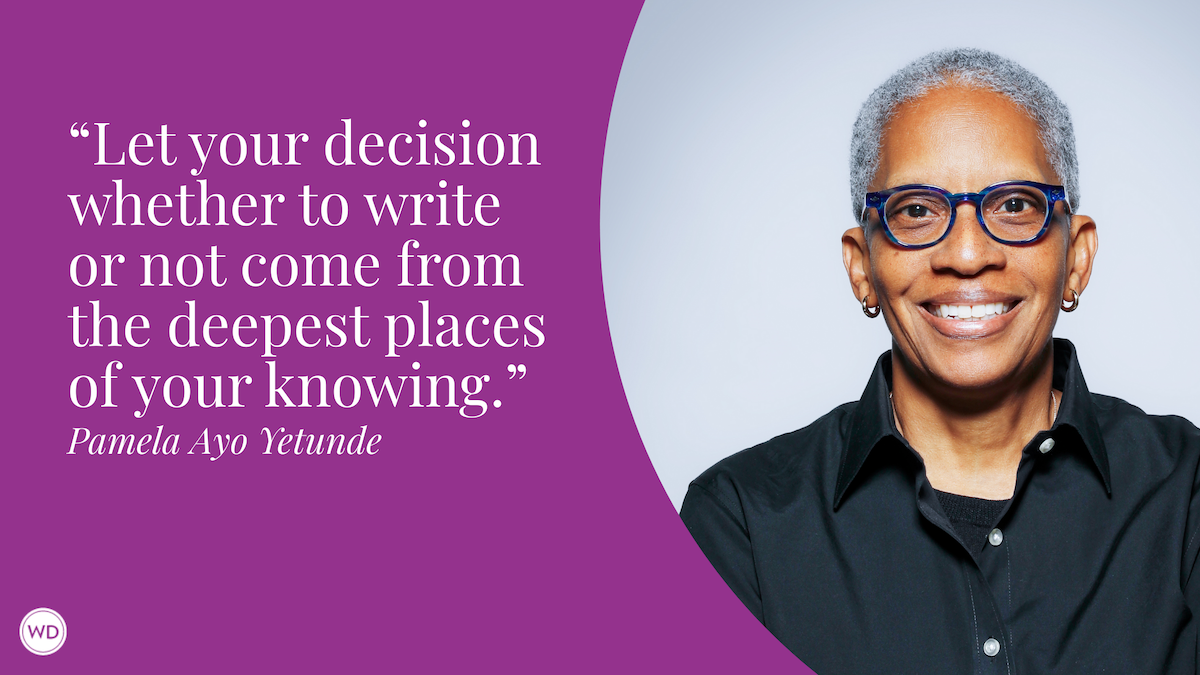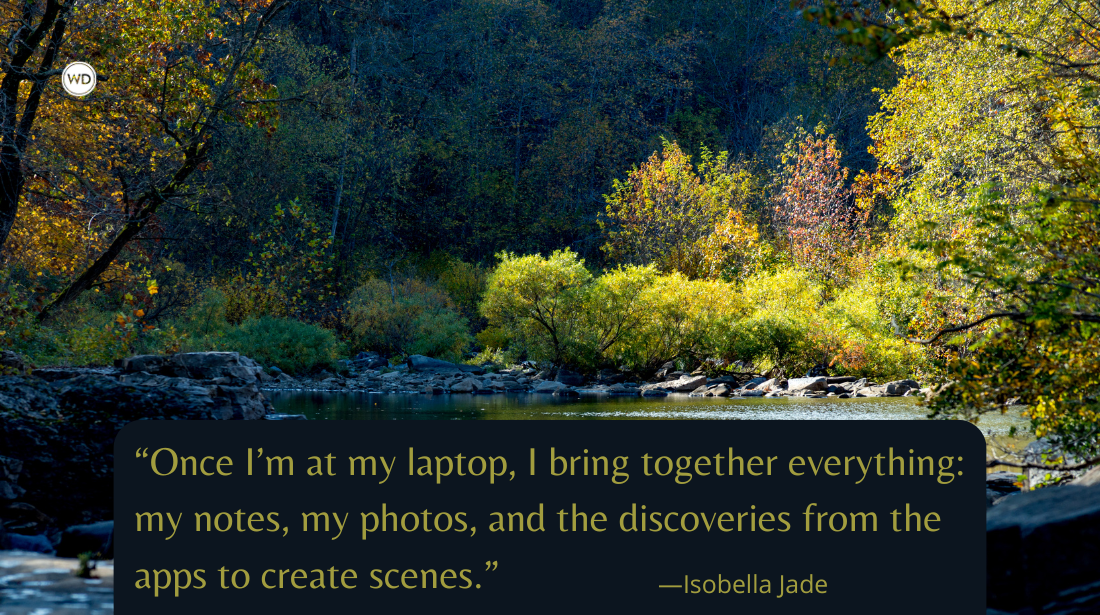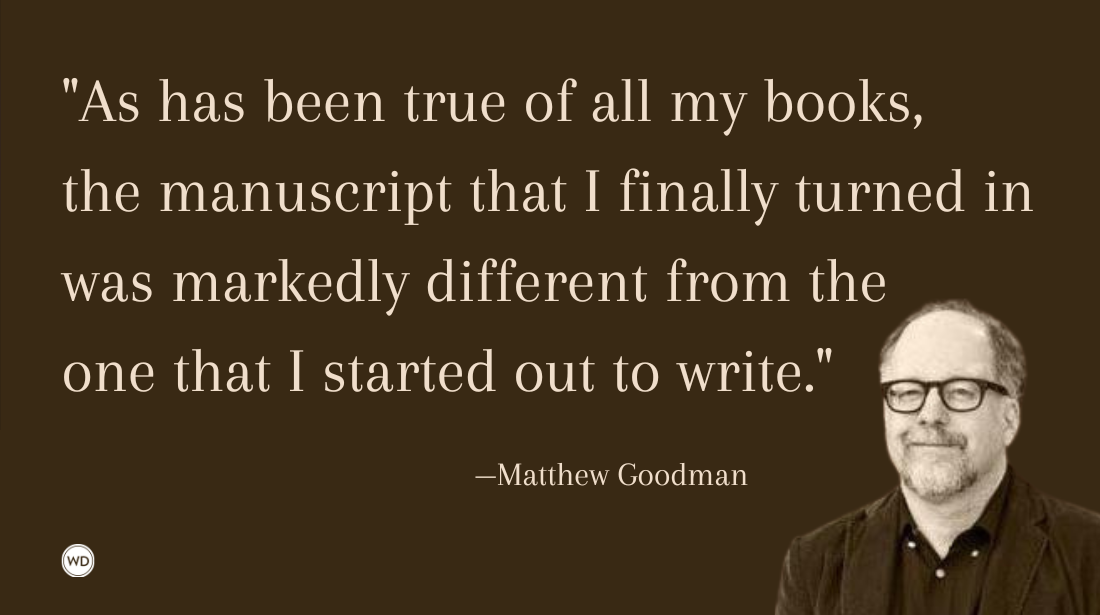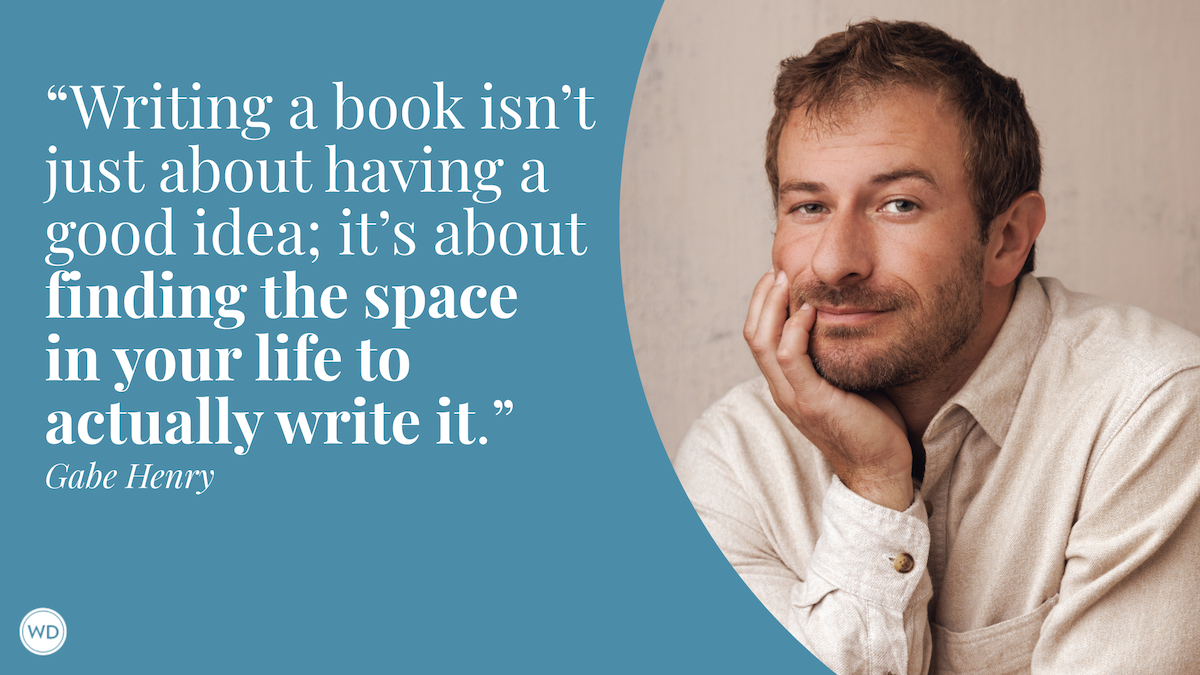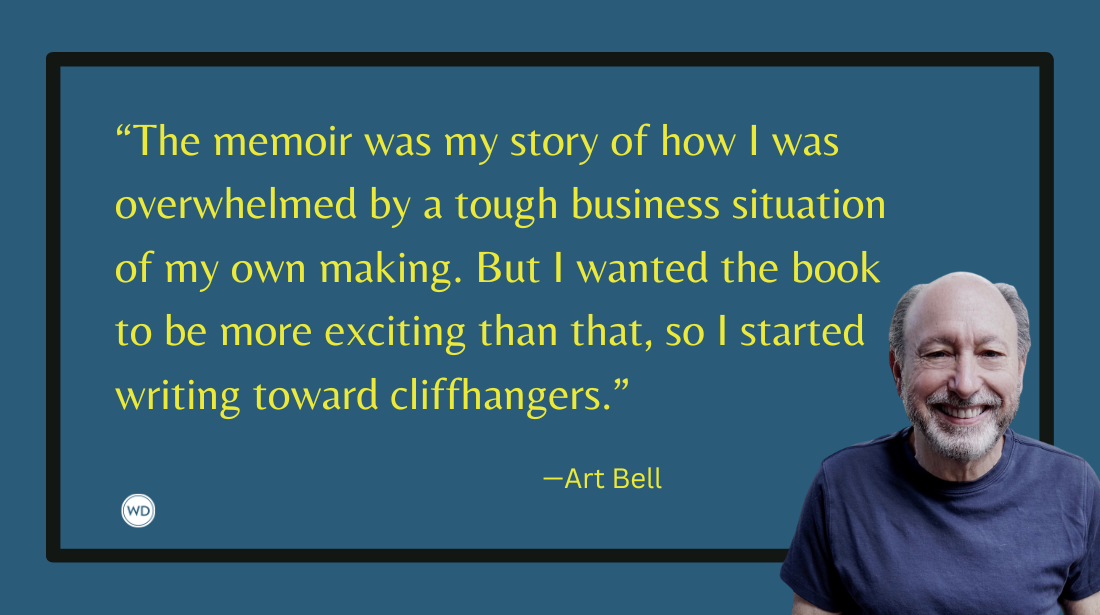Framing Your Memoir: 3 Parameters You Need to Know
Without having a clear framework in mind before you begin your story, you risk losing sight of why you started writing your memoir in the first place. Here’s help determining your framework.
Joan Didion’s award-winning memoir The Year of Magical Thinking begins, not ends, with death. It is the sudden loss of her husband that launches her into the “year of magical thinking.” The story starts the second her husband’s life ends, and at that very moment the first parameter of the story is (very tragically) set.
When attempting to translate a significant portion of your life’s story, it is crucial that you set limits early on and decide which portion of your life will prove to be the most colorful, provocative and representative of the story you wish to tell. If you don’t set limits early in the writing process, your story can easily get out of control, meander and become completely disorganized. A well-crafted memoir will encapsulate a specific story that fits somewhere within the larger framework of your life.
This post is an excerpt from literary agent Paula Balzer's Writing and Selling Your Memoir. Balzer is the founder and owner of The Paula Balzer Agency. She represents writers of memoir, popular culture, journalism, and fiction, including Oscar-award-winning writer of Juno, Diablo Cody, author of NYT bestsellers Pledged and Quarterlife Crisis, Alexandra Robbins, American Idol judge Randy Jackson and author of cult classic Gospel of the Flying Spaghetti Monster Bobby Henderson. Purchase her book here.
Thankfully, not all memoirs are written under such dark circumstances (although if you are an avid reader of the genre, you know by now that a good number of them are). The sudden and dramatic death of Didion’s husband provided an obvious beginning to her story. But do all life stories have such clear starting and, for that matter, ending points? Unless your story begins when you received an unpleasant diagnosis, the day your spouse left, or—on the brighter side of things—when you won several hundred million dollars in the lottery, memoirs often start with more of a whimper than a bang. The same is true of endings. Some memoirs end with complete resolution, some leave us at a comfortable middle point, and others leave us hanging. How do you know when to end a story that might still be going on?
Setting these kinds of parameters isn’t about blowing your reader away with a gripping first page or wrapping up a complicated memoir with a perfectly poetic ending. It’s about sorting out your story before you find yourself buried in so many details—memories, ideas, facts, tangents, anecdotes—that you can’t dig yourself out.
Without having a clear framework in mind before you begin your story, you risk losing sight of why you started writing your memoir in the first place.
1. Find Your Moment of Discovery.
How does a writer decide where to begin when a life story is so full of laughter, conversations, friendships, adventures, tragedies and day-to-day memories? Knowing how to literally begin telling a story is a huge challenge for any writer—whether your story opens the day you leapt out of an airplane, or starts more subtly, at the moment you began to realize that your marriage was over. With the latter example, do you start with a description of what you were thinking? Or maybe with the conversation you had with your husband when you woke up that day? Maybe that moment came while you were watching the clock, waiting for your husband to come home on your anniversary. Or maybe it was the morning he stopped asking you if you wanted a second cup of coffee.
As a memoirist, it’s important that you take a step back and recognize when your personal journey began. This is your moment of discovery, and it sets the first parameter of your memoir. I realize this sounds a bit grand, but I promise it’s not as dramatic as it seems, and thinking along these lines when planning your memoir will prove to be incredibly helpful.
The moment of discovery is the key moment signaling that the memoirist’s story has begun. In her memoir A Three Dog Life, Abigail Thomas recalls her own moment of discovery:
Monday, April 24, at nine forty at night, our doorman Pedro called me on the intercom. “Your dog is in the elevator,” he said. The world had just changed forever, and I think I knew it even then.
“Your dog is in the elevator.” After her doorman spoke these words, Abigail learned that her husband, who was out walking the dog, had been hit by a car and had sustained a traumatic brain injury. Her memoir is a moving and eloquent account of her life with a man who lives in the continual present. While I’m sure the author wishes she had never heard those words, it is her skill as a memoirist that enables her to recognize them as a moment of discovery. It was that sentence that signaled the beginning of her new life, as difficult as it may be.
What makes Thomas’ moment of discovery so astonishing is that it is such an incredible mixture of ordinary and bizarre. Although she had not yet learned about the accident, the situation immediately suggested to her that something was desperately wrong. Several connections must have been made in her mind at once for her to realize that this simple scenario—her dog returning home alone from his walk out on the city streets—was just the beginning of a tragic and dramatic story. She was able to trace the beginning of all the massive changes she was about to experience back to this one particular moment.
Not only does this moment of discovery provide the first parameter of her story, but it is also engaging, powerful and meaningful, and it draws the reader in right from the beginning.
2. Don’t Search for Something That Isn’t There.
Perhaps you’ve chosen to write about your bucolic upbringing in a small town in Iowa, where everyone loved each other. After winning a football scholarship, you became the town doctor, beloved by all, and you married your high school sweetheart and eventually had four kids who are even more wonderful and noble than you.
Sounds pretty picturesque, right? So should you start digging through your family files to see if you had any aunts who might have lived in the attic for a spell? Or ask around to see if you’re related to any devil worshippers or ax murders? Do you need to get arrested in order to make your memoir marketable?
No, no and no.
The parameters you set for your story may be very personal and subtle, or they may be big and unmistakable. But remember, this isn’t about drama; you just need to stay focused and work within the boundaries you’ve chosen. If you’ve decided that four years in the life of a small-town doctor will make for a great memoir, there is nothing wrong with opening your story with a scene from your waiting room. It doesn’t need to be the scene of a grisly accident. It just needs to fit the story you plan to write.
3. Work With the End in Sight.
Perhaps one of the biggest challenges of memoir writing is knowing when to end your own story. Some memoirs will have natural endings, such as when a battle with a long illness ends, when a person leaves a difficult situation, after a particular decision is made, or even after a trip has ended. But when a situation is ongoing, how do you possibly decide when it is appropriate to end your own story? While it may seem counterintuitive to know how to conclude a book before you’ve truly gotten into the thick of things, I’m a firm believer that when writing a memoir it is best to work with the end in sight.
One of the biggest advantages to memoir writing is that you usually have access to most of the materials right up front, since the story is largely composed of your own memories. Because memoirists have the advantage of knowing everything they have to work with, you can start to envision where you would like your story to go and to plan how to reach that ending point.
I think it’s important to remember that the ending of a memoir means the ending of this particular story. With memoir writing, it is the author’s job to place this parameter appropriately in the story to give the reader closure. While the memoirist’s story may change the very next day, or maybe the following week, or several years from now, at some point a decision needs to be made about how much of the story is appropriate to relay in this book.
In the middle of writing your memoir or thinking about writing it?
WD’s Memoir Writing Kit is 6 items rolled into one bundle
at a steep discount. This kit gives simple, yet in-depth instruction
on crafting a great memoir and getting it published. It includes:
—How to Write Your Life Story or Memoir (OnDemand Webinar)
—Writing & Selling Your Memoir
—And more!
So if your memoir cannot be wrapped up easily at an obvious point in time, try answering the following questions when making a plan to tie things up:
- Is there an ongoing theme in my memoir that can come full circle in my ending? Is there a memory or event that I can use to demonstrate this?
- Is there a specific age or year of my life I want to end with? (If so, be sure you know why—how does this play into your memoir as a whole?)
- Was there a decision I made or an action I took at some point in my story that changed the direction of my life?
- Was there an internal change that took place? An emotional response to something that happened that played a key role in my story?
As a memoirist, you face many considerations when writing your story: how to structure it, what events to include or leave out, what tone and voice you should employ, and more. But perhaps the most important considerations are the parameters for your memoir. Setting these parameters—making these decisions—before you sit down to type will ultimately save you time and will result in a story that is centered, focused and compelling to read.
Thanks for visiting The Writer's Dig blog. For more great writing advice, click here.
Brian A. Klems is the editor of this blog, online editor of Writer's Digest and author of the popular gift bookOh Boy, You're Having a Girl: A Dad's Survival Guide to Raising Daughters.
Follow Brian on Twitter: @BrianKlems
Sign up for Brian's free Writer's Digest eNewsletter: WD Newsletter



